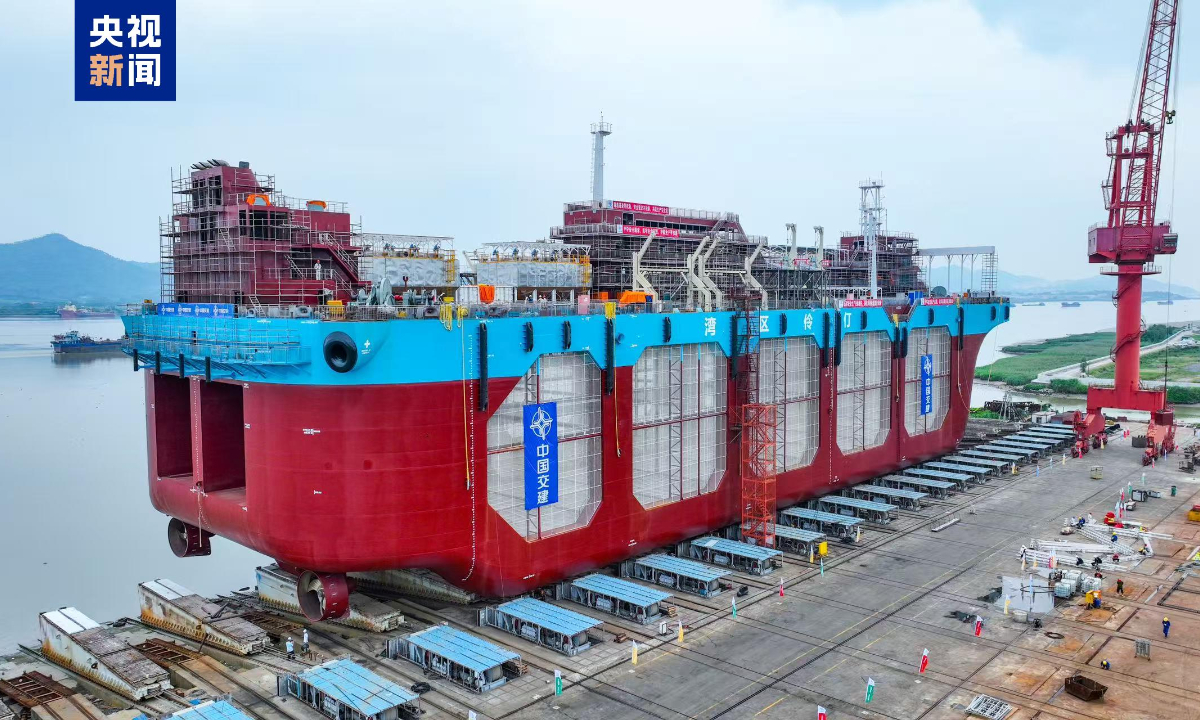
Photo: CCTV
World’s first self-propelled deep-sea aquaculture vessel with a pollution-free seawater exchange system was successfully launched in Jiangmen, South China’s Guangdong Province on Tuesday, marking the start of a new era of China’s deep-sea aquaculture industry featuring the “technological ocean ranching” that integrates intelligent aquaculture practices with energy conservation, environmental protection, and a combination of fishery and tourism.
The vessel named Bay Area Lingding boasts an aquaculture space of nearly 80,000 cubic meters – equivalent to the volume of 32 standard swimming pools, providing ample room for fish to swim freely, thereby enhancing their vitality and improving the quality of the fish meat, China Central Television (CCTV) reported on Tuesday.
Upon completion, the vessel is expected to produce 5,000 tons of fish annually, serving as a key contributor to ensuring “fish freedom” for local residents in the Guangdong-Hong Kong-Macao Greater Bay Area.
The vessel measures 155.8 meters in length, 44 meters in width and 24 meters in depth, with a maximum draft of 20 meters.
Unlike ordinary fishing vessels, the underwater section of the vessel is not a closed structure. Instead, it comprises 15 columns assembled into an “underwater palace.” By suspending fishing nets within this structure, 12 independent aquaculture chambers are created, enabling the simultaneous cultivation of multiple fish species and significantly diversifying the types of aquaculture possible.
Equipped with an advanced all-electric propulsion system, the vessel also features a 20-kilowatt wind power generation system, which can meet the electricity needs during stationary aquaculture operations, expecting to contribute to the development of green shipbuilding industry.
Additionally, the vessel is equipped with high-precision GPS and BeiDou navigation and positioning systems, capable of providing real-time updates of its location to offer timely alerts and guidance for aquaculture personnel.
In “cruising” mode, the Bay Area Lingding can flexibly adjust its speeds and courses by operating its propellers, based on real-time ocean environmental data and fish distribution, allowing it to precisely locate waters best suited for the growth of the farmed fish, according to Huang Hongyu, general manager of Jiangmen Hangtong Shipbuilding Co, a subsidiary of China Communications Construction Company Fourth Harbor Engineering Co.
The aquaculture vessel is also equipped with multiple sensors and automated feeding systems in each of its farming chambers. If abnormal water temperatures or pollution are detected in a specific area, the vessel can automatically raise the farming chambers to reduce water resistance and swiftly navigate to more suitable waters, ensuring the safety and quality of the farmed fish.
During stationary breeding periods, the vessel’s offshore leisure facilities can provide services such as fishing, dining and accommodations for tourists, CCTV reported.